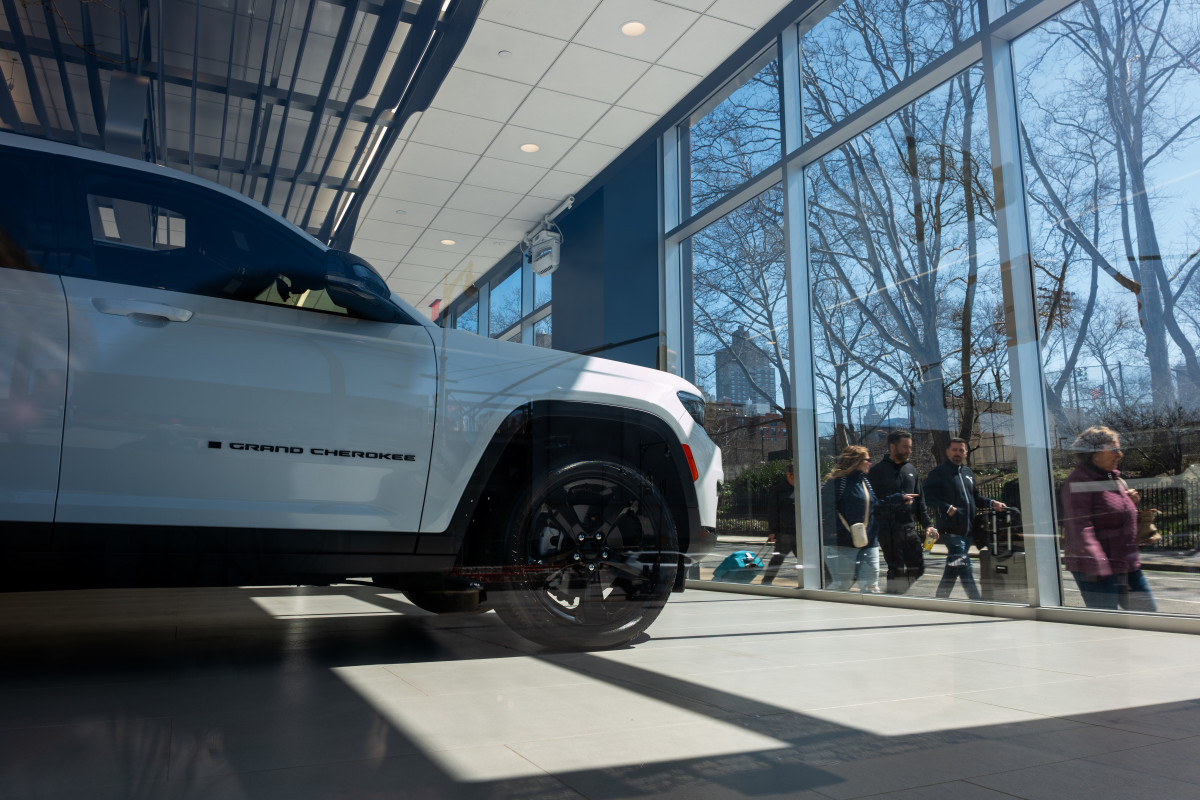The idea of a new car will always tempt drivers
New cars are expensive. According to data from Kelley Blue Book and Cox Automotive, car prices are being kept steady, but the average new car in the U.S. still costs a whopping $48,799 in May 2025, a 2.1% increase from the same month in 2024. Despite this, it’s easy to get tempted by the idea of a new car. It can be anything: either your current ride is giving you headaches, the new model for 2026 looks really cool, or your local dealer is offering a sweet financing deal on a 2025 model that can be shoehorned into your budget.
However, for a disturbing number of Americans, these decisions leave them in a level of debt that would make Dave Ramsey and Caleb Hammer emotional and stuck in a hole that’s getting even harder to climb out of.

Andrej Ivanov/Bloomberg via Getty Images
The cycle of debt is a flat circle, says Edmunds
According to new data from car-buying authority Edmunds, the level of negative equity (when people owe more money on a car than its value) in new car purchases has reached a four-year high. They report that 26.6% of cars traded in towards new cars had negative equity in the second quarter of 2025, up from 26.1% in Q1 2025 and 23.9% in Q2 2024.
When buyers trade in a car with negative equity, the amount people owe is usually rolled over or paid up front. Edmunds data shows that the average amount that buyers owed on cars with negative equity in Q2 2025 was $6,754, and over a third (32.6%) of underwater buyers carried between $5,000 and $10,000 in debt into their next car loan. Additionally, 23.4% of these buyers owed more than $10,000, and 7.7% owed more than $15,000.
“Consumers being underwater on their car loans isn’t a new trend, but the stakes are higher than ever in today’s financial landscape,” Edmunds director of insights Ivan Drury said in a statement. “Affordability pressures, from elevated vehicle prices to higher interest rates, are compounding the negative effects of decisions like trading in too early or rolling debt into a new loan, even if those choices may have felt manageable in years past.”

Spencer Platt/Getty Images
Buying a new car is more challenging than ever
The rise of negative equity comes as buying a new car is tougher than ever. Car prices are still high, and interest rates are much higher than those of the COVID years in 2020 and 2021. Despite this, many consumers follow along, trading in their cars early and/or rolling existing debt into their next car without adjusting their budgets.
As a result, in the second quarter of 2025, the average buyer who piled their negative equity on top of a new loan financed an additional $12,145 compared to the typical new car buyer. Additionally, they made average monthly payments of $915, compared to the typical new car buyer who paid $756.
Final thoughts
Figuring out if you have negative equity with your car loan is pretty simple. Start by checking how much your loan payoff amount is, which you can find in your monthly statements. Then, see what your car is worth right now on sites like Edmunds or Kelley Blue Book. If your loan payoff is more than what your car is worth, you have negative equity, and the difference between the two numbers is how much you’re underwater.
Joseph Yoon, a consumer insights analyst at Edmunds, advises, “In many cases, holding onto your current car and staying current on payments and maintenance may be the wisest choice.” That said, if getting a new car feels right, then making the right decision about your shopping is crucial. He also says, “If a new vehicle is the right decision for you, doing your research is key. Choosing the right car for your needs and budget can save you more in the long run than any incentive the dealer or manufacturer may be offering. In today’s market, smart shopping is your strongest defense.”